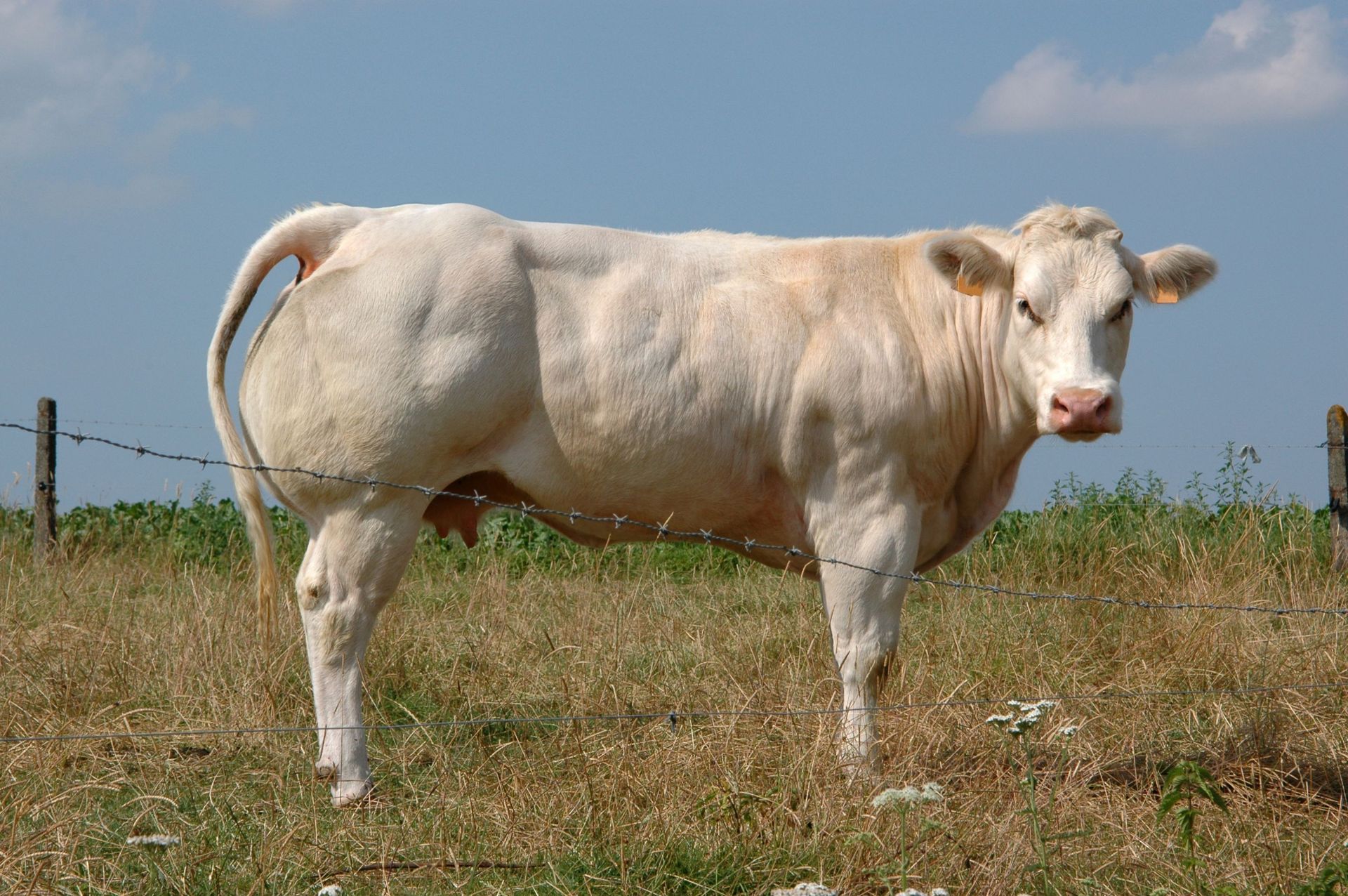This topic takes on average 55 minutes to read.
There are a number of interactive features in this resource:
 Biology
Biology
 PSHE / Citizenship studies
PSHE / Citizenship studies
 Science (applied)
Science (applied)
Genetic engineering is the direct manipulation of the DNA of an organism to change the phenotype in a particular way.

A Belgian blue heifer – the extensive muscles are clearly visible.
This picture is of a breed of cow called a Belgian Blue. It has been genetically manipulated by people so that it has more muscle, and therefore produces more meat, than a normal beef cow. A mutation in one of its genes means that muscle growth no longer automatically stops when it should: the cow therefore becomes ‘double-muscled’ (although it actually has muscles only up to 40% bigger than they would otherwise be). The cows become so bulky that they often can’t give birth naturally, so calves often have to be born by caesarean. This is one example of humans using their technical knowledge and ability to alter genetic material to create an animal for human gain, but at the potential cost of reducing the cow’s quality of life.
This seems a perfect example of how genetic engineering can be abused – but in fact, Belgian blues have not been genetically engineered. The breed was developed in the 18th century by selective breeding. Selective breeding is a process humans use for promoting desirable traits in plants and animals by selecting individual plants or animals with the desired characteristic and breeding them. Each trait is caused by the functions of a particular protein or group of proteins, which are coded for in the DNA – so the genetic material of the breed changes over time to reflect the promotion of a particular trait. We are rapidly gaining a much clearer understanding of how a specific gene or natural mutation in a gene leads to a particular trait in the phenotype. We are also developing the tools needed to allow us to use this knowledge in very specific ways.
Genetic engineering is also known as genetic modification (which can be misleading as the genetic code is naturally modified by mutations all the time) or recombinant DNA technology (‘recombinant’ really just means ‘recombined’). It is also increasingly referred to as gene editing, as the process becomes more refined. A major part of genetic engineering involves moving a piece of DNA from one genome to another but the term also includes changing how a gene is regulated (such as switching genes on and off). To change the DNA of an organism, the desirable gene must be located, isolated, copied, and introduced into a new genome, or modified and reintroduced into the original genome. The basic process is the same for animals, plants and bacteria.
In many ways, genetic engineering is a more accurate version of selective breeding. The new technologies simply allow us to alter the genome directly. The technology also gives us the opportunity to introduce a wider range of new traits into an organism than by conventional breeding. The big difference between genetic engineering and selective breeding is that in genetic engineering scientists can, in some situations, introduce genes from a completely different species into the genome of an organism. These organisms are known as transgenic.
There are a number of areas in which genetic engineering has great potential. The vast majority of genetically engineered animals have been developed for medical purposes: biopharm animals which have been genetically engineered to produce a specific substance for pharmaceutical use, and animals as a source of organs for xenotransplantation. Other genetically engineered animals include research animals (which have been developed to be more susceptible to a specific disease so treatments for that disease can be tested on them) and companion animals (such as hypoallergenic pets). Disease-resistant organisms can be developed which have advantages in both food production and biopharming. The genetic modification of crops has also had dramatic effects on the ability of plants to withstand pests and diseases, on the nutritional value of some crops and on the ability of some staple crops to resist extreme weather events. In 2015, 83% of the soybeans, 75% of the cotton and 29% of maize planted globally were genetically modified.
The technology used to modify genomes is being refined all the time. For example, a technique known as CRISPR-Cas9 is enabling scientists to edit genomes more accurately, quickly and cheaply than ever before.
Click here to find out more about how genetic engineering actually works and click here to find out more about CRISPR-Cas9.